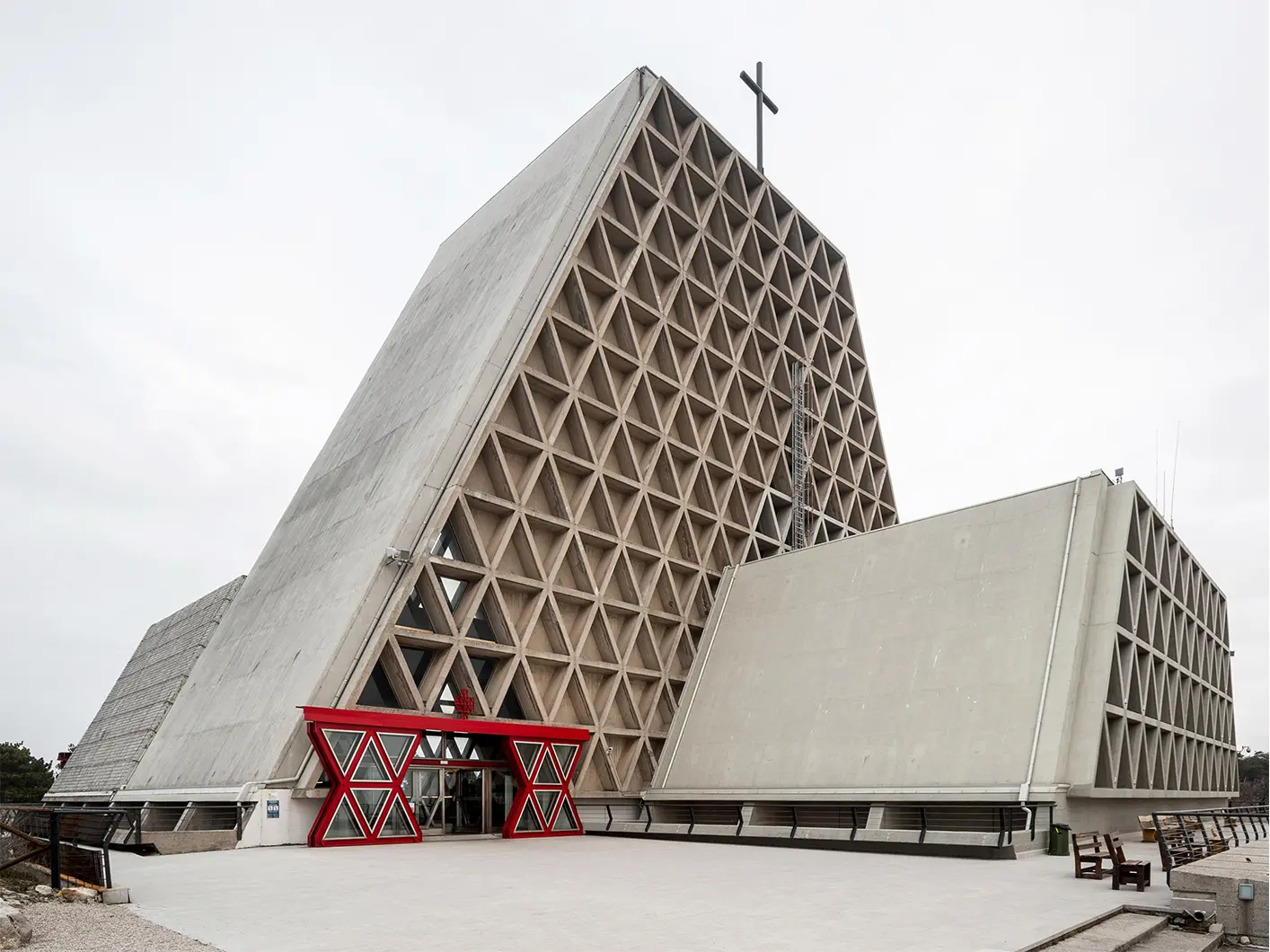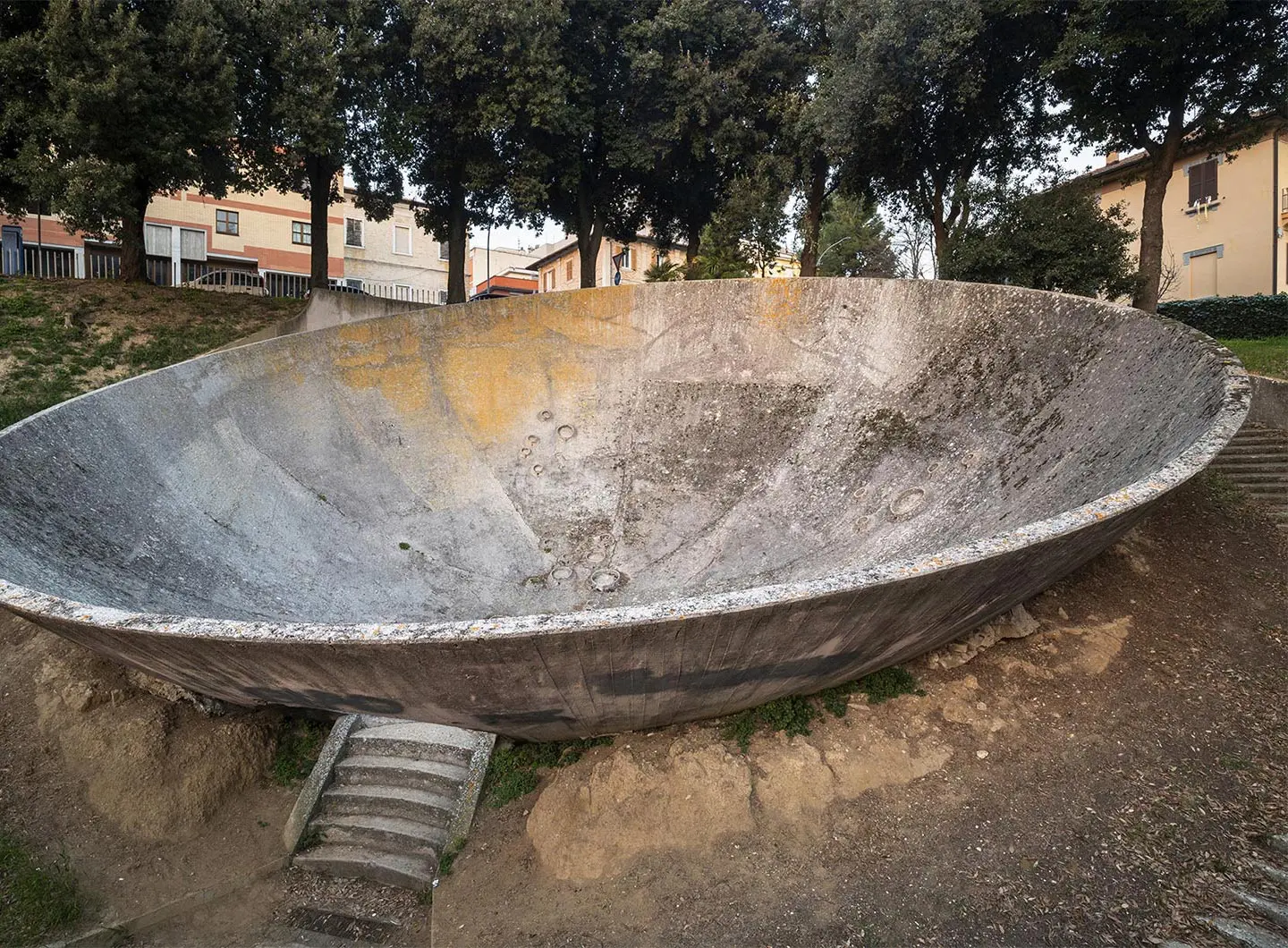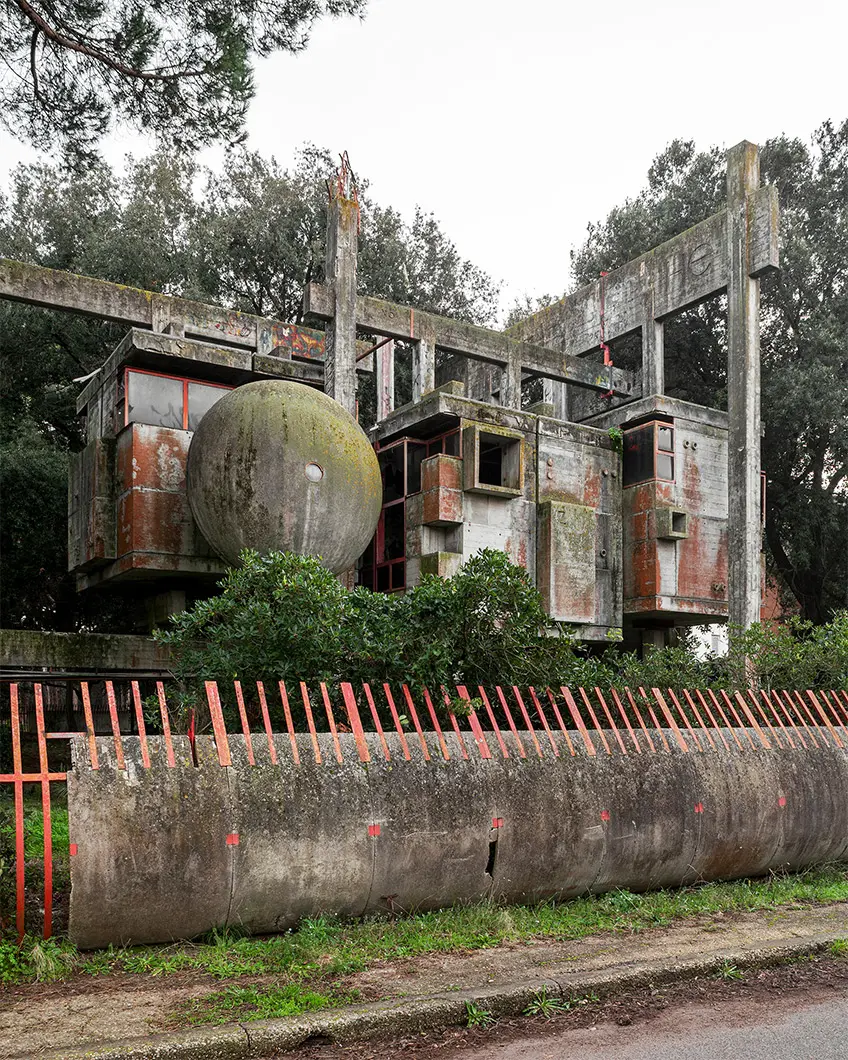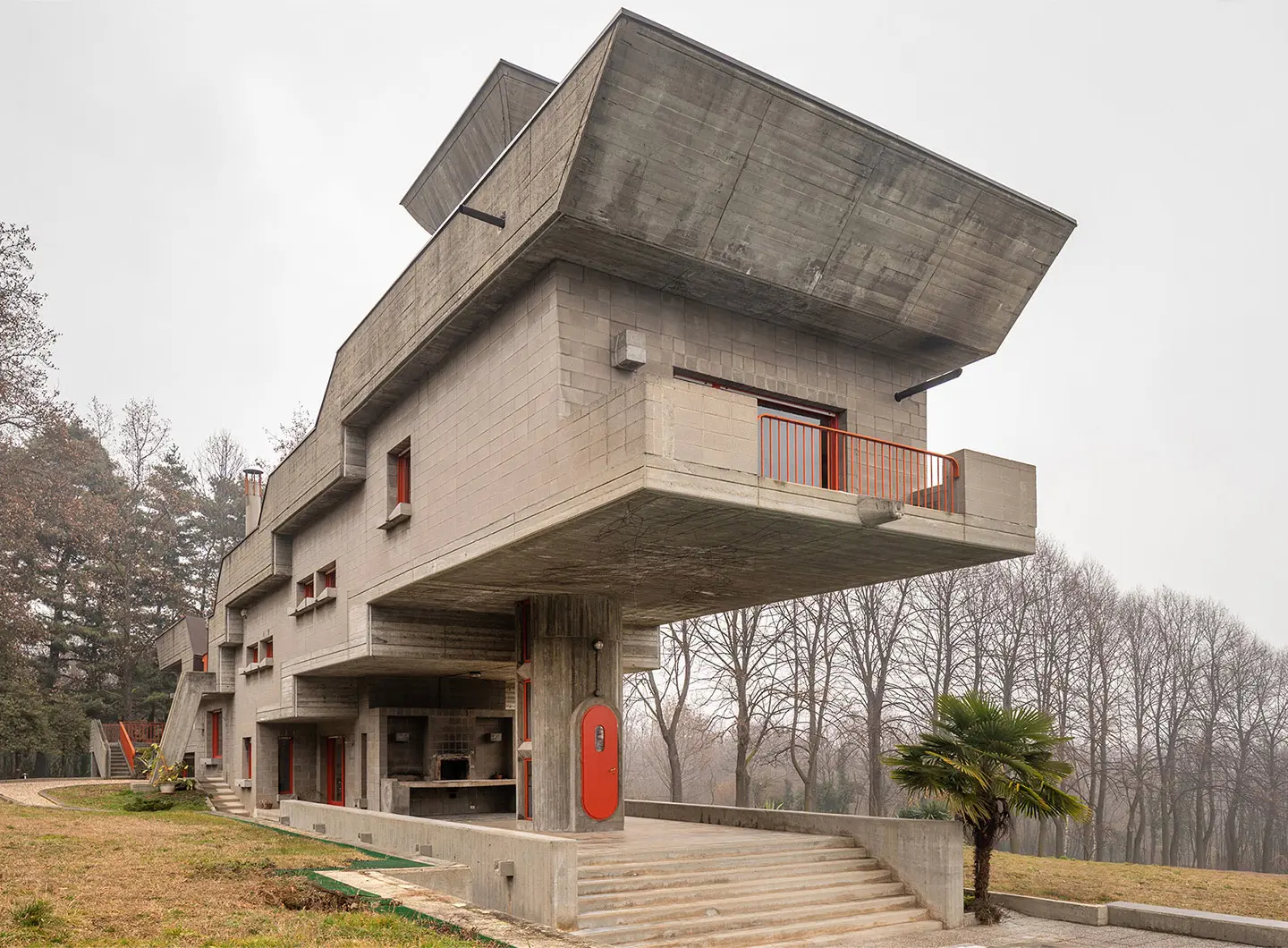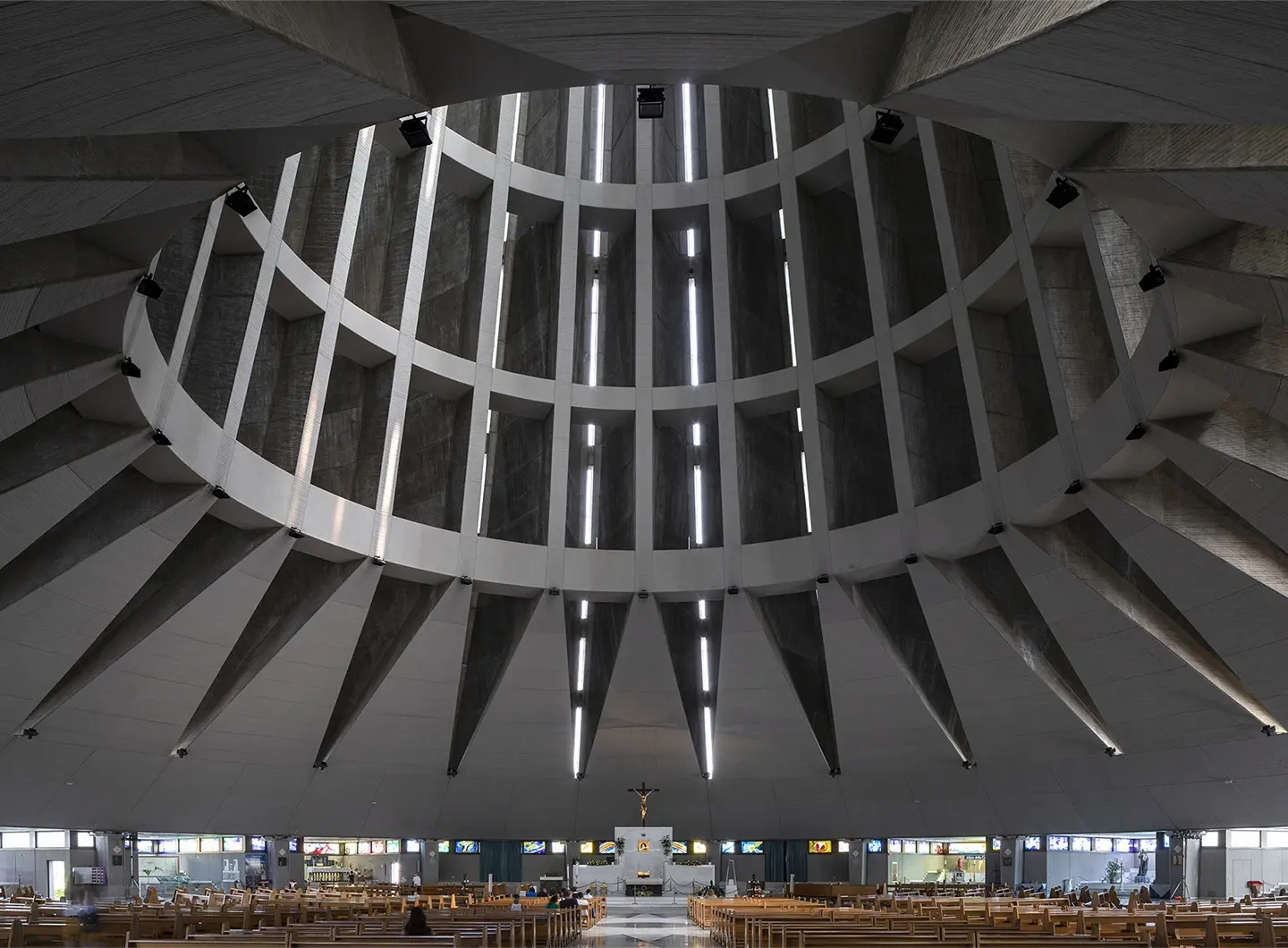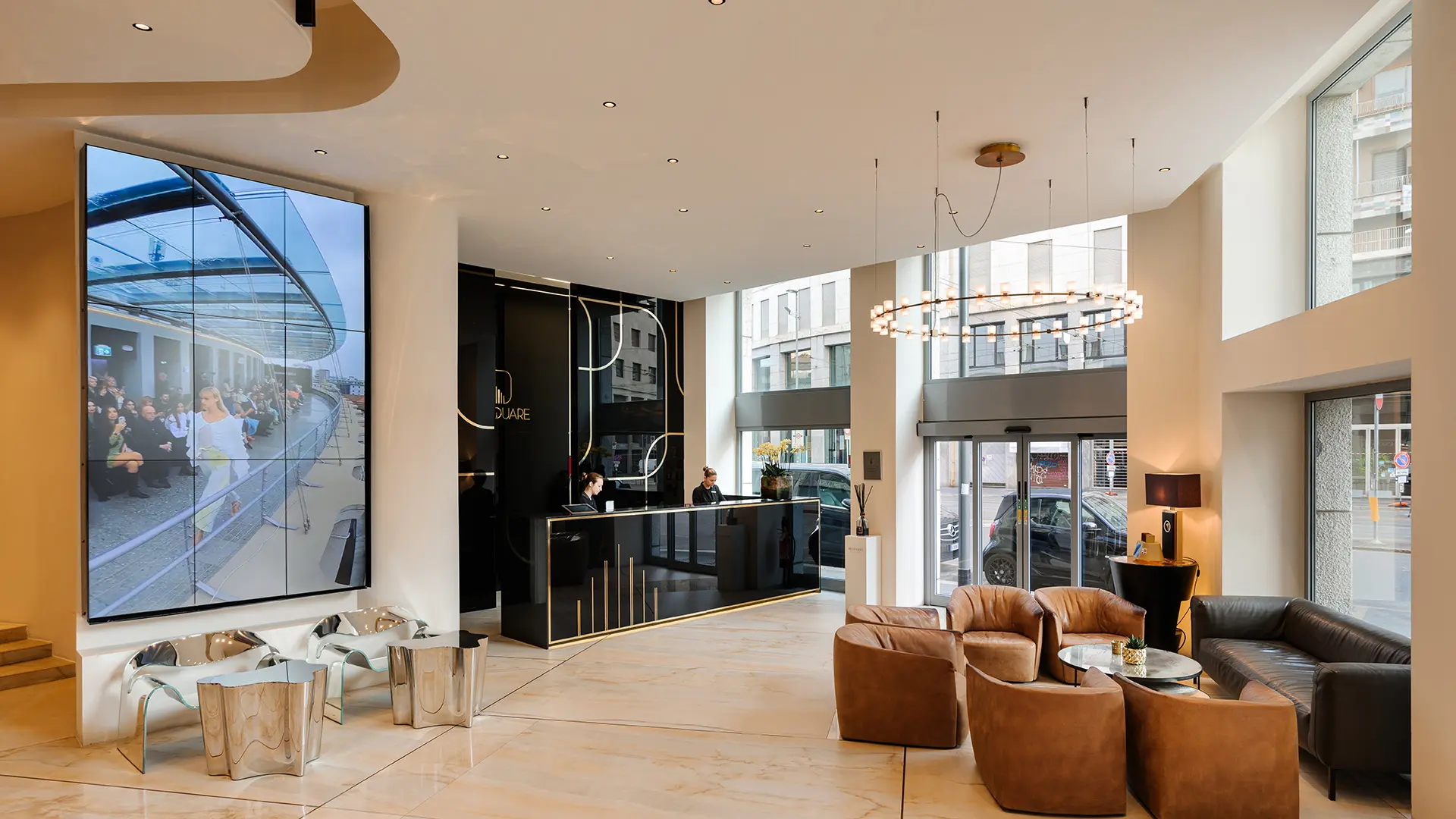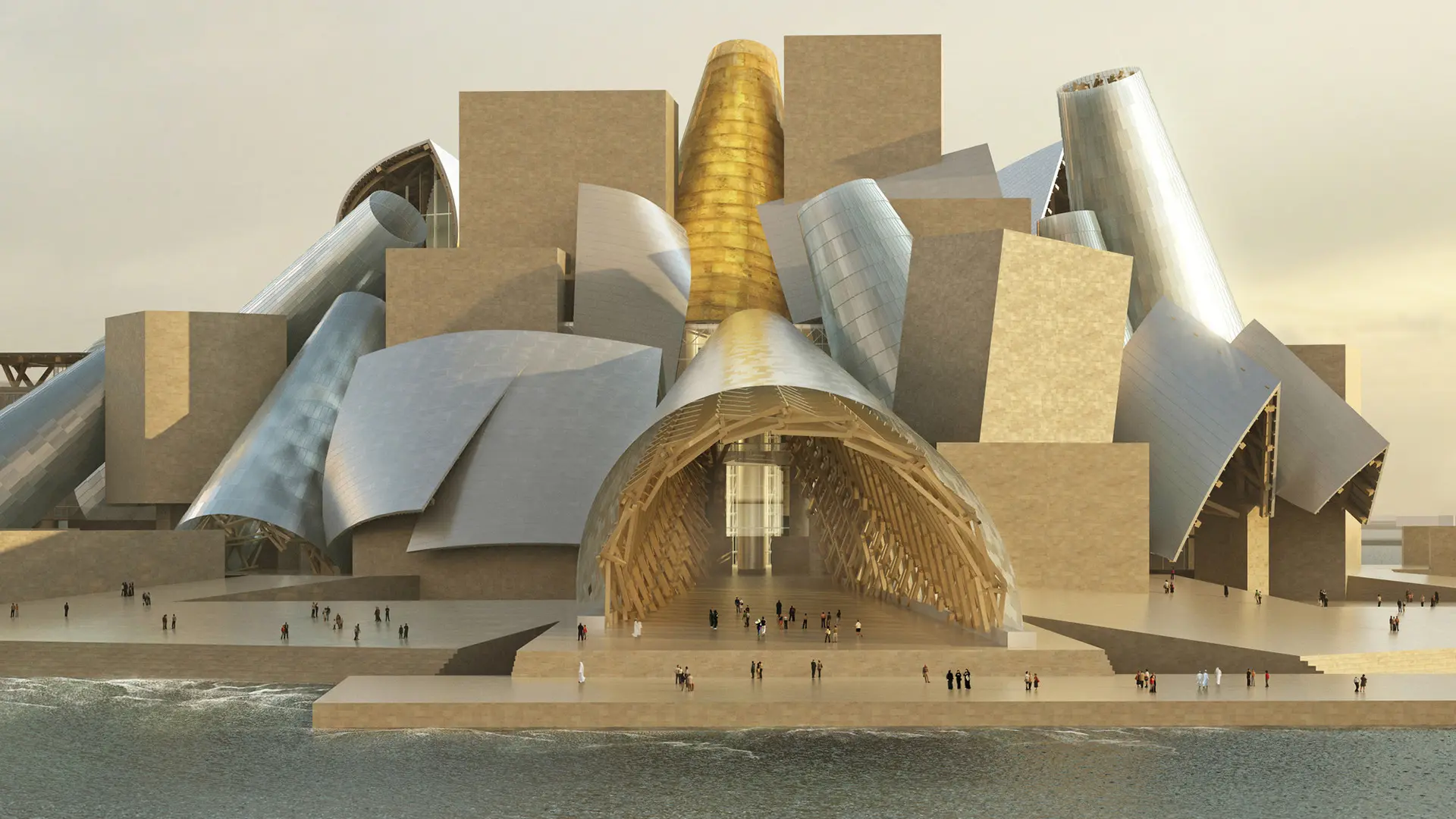In partnership with MiCodmc, a selection of establishments ripe for discovery during the 64th edition of the Salone del Mobile.Milano, from 21 to 26 April 2026
Brutalism: from architectural movement to global trend

Augusto Murer Studio-Museum, Falcade. Giuseppe Davanzo (1970-1971). Photo: Roberto Conte.
The origins and spread of one of the best-loved and most discussed architectural styles of the last few years
The term “Brutalism” derives from béton brut (which means “raw cement” in French), and also refers to the raw art of Jean Dubuffet and informal painting.
The term became more widespread after the Second World War, particularly in the field of architecture, but has enjoyed huge Pop diffusion over the last decade.
To trace its origins, we need to go back to the 1950s. The British architect Alison Smithson was one of the first to use the word in an architectural project narrative – for a small house in Soho previously described using the definition “warehouse aesthetic.” The Smithsons declared that, “if built, the house would have embodied the first example of New Brutalism in England,” as the preamble to the specifications shows. The structure was intended to be completely exposed, without any internal finishes where possible. The contractor was to aim for a high standard of basic construction, as in a small warehouse.
In an essay entitled The New Brutalism, published in 1955 by the British journal The Architectural Review, the critic Reyner Banham clearly set out the essential characteristics of the architectural style: “1, Memorability as an Image; 2, Clear exhibition of Structure; and 3, Valuation of Materials ‘as found.”
Contextually to the historical period and the rise of new “-isms” in the artistic and cultural fields, the British theorist maintained that Brutalism was first and foremost “a banner, a slogan, a policy consciously adopted by a group of artists, whatever the apparent similarity or dissimilarity of their products.” In his essay, Banham analyses the characteristics of this architectural movement at length, attempting to outline which works to include and, above all, which to exclude.
While Le Corbusier with his famous Unité d’Habitation in Marseille (1948) is seen as one of the forerunners and fundamental references of Brutalism, another great master, such as Louis Kahn along with his Yale Center for British Art (1953), have no place in the narrow field formulated by the critic.
Brutalist architecture spread globally during the second half of the twentieth century, but with different vocabularies and meanings in each country. Despite starting off as an architectural style, it can no longer still be considered a true, theoretically defined current, rather assuming an aesthetic form that cuts across different styles. There are examples of brutalist architecture all over the world, from Italy to Brazil and Qatar to Japan, by way of Russia and the United States. The brutality of concrete characterises a great many monuments, churches, residential buildings, viaducts, housing complexes, cemeteries and unfinished projects, dialoguing with different styles and materials to give life to different, eclectic and inconsistent interpretations.
Much, therefore, has been written about Brutalism and its local applications. Among those most worthy of mention is the recent publication Brutalist Italy: Concrete Architecture from the Alps to the Mediterranean Sea, by the photographers Roberto Conte and Stefano Perego. The publisher Phaidon has also just produced the Atlas of Brutalist Architecture, a large global compendium of brutalist architecture which also includes a number of buildings that no longer exist.

Cemetery extension, Jesi. Leonardo Ricci (1984-1994). Photo: Stefano Perego.
However, it’s on social media and photo sharing platforms and thanks to the painstaking work of architecture fans, rather than professionals, that Brutalism enjoys its greatest diffusion. It’s therefore equally interesting to analyse Brutalism outside its strictly architectural context, also taking in the interpretations of its fan base.
An article in the online newspaper Il Post looks at the reasons behind the recent revival of Brutalist architecture: “The buildings conventionally associated with the brutalist style are now appreciated by some people for their geometric precision and aesthetic rigour, as well as for the stories to which most of these bear witness. Other people, however, think them aesthetically unpleasing and anonymous buildings, symbols of degradation, abandonment and social degradation, abandonment and social ghettoization, to the point that the possibility and in some cases the need to demolish them is often discussed. Buildings are, in other words, partly the object of the same contempt and criticism that sanctioned the end of Brutalism in the early eighties." The American journalist Brad Dunning in GQ defines Brutalism as "the techno music of architecture, stark and menacing."
It comes as no surprise that the term Brutalism is often used in a wider, often incorrect sense. It has suffered much the same fate as Minimalism: a concept that has become so widespread that it loses some of its original nature and precise definition. It has become a hashtag, an easily-applied label. Now there are not just brutalist buildings or interiors, but brutalist graphic design, brutalist fashion, brutalist branding, brutalist cuisine and so on …
The Brutalist, the film by Brady Corbet at the 2024 Venice Film Festival
The generalist diffusion of this architectural style is also confirmed by the very recent success of The Brutalist at the 81st Venice Film Festival: a film capable of bringing together the national and international press, but yet to be put to public test in cinemas. Three great names were the inspiration for the architect protagonist of the film - Louis Kahn, Paul Rudolph and Marcel Breuer. An interweaving that well represents human events, ambitions and visions of great architects. In an article in Domus, Gabriele Niola says: “The beauty of The Brutalist lies in its unwavering dedication to the field. From the opening credits, it’s clear that this is a film deeply in love with design and architecture. It celebrates not just the grandeur of architectural works, but also the profound impact that architecture can have on people and society.” Thanks to this film, Brutalism (in its wider contemporary sense) will make further inroads into the common imagination, confirming its primacy as the most loved architectural style.
The Brutalist, il film di Brady Corbet alla Mostra del Cinema di Venezia 2024
La diffusione generalista dello stile architettonico è certificata anche dal recentissimo successo di The Brutalist all’81esima Mostra del Cinema di Venezia: un film capace di mettere d’accordo la stampa nazionale e internazionale – in attesa di un riscontro del pubblico nelle sale. L’ispirazione per l’architetto protagonista del film viene da tre grandi nomi: Louis Kahn, Paul Rudolph e Marcel Breuer. Un intreccio che ben rappresenta vicende umane, ambizioni e visioni dei grandi architetti. “Il bello di The Brutalist è che è totalmente dedito alla sua materia. Questo è un film innamorato del design e dell’architettura, fin dai titoli di testa. È una celebrazione non solo delle grandi opere, ma di ciò che l’architettura può fare per le persone e per la società,” scrive Gabriele Niola su Domus. Grazie a questo film, il Brutalismo (nella sua accezione contemporanea più espansa) entrerà ancor di più nell’immaginario comune, confermando il suo primato come stile architettonico più amato.


 Stories
Stories

